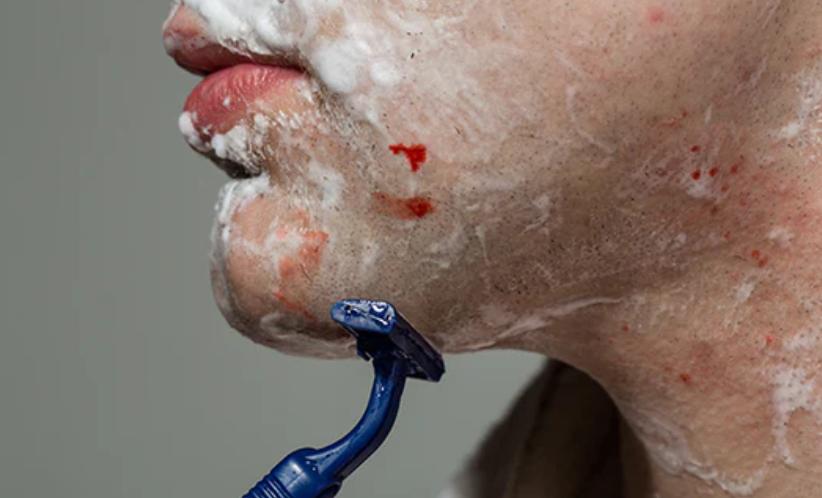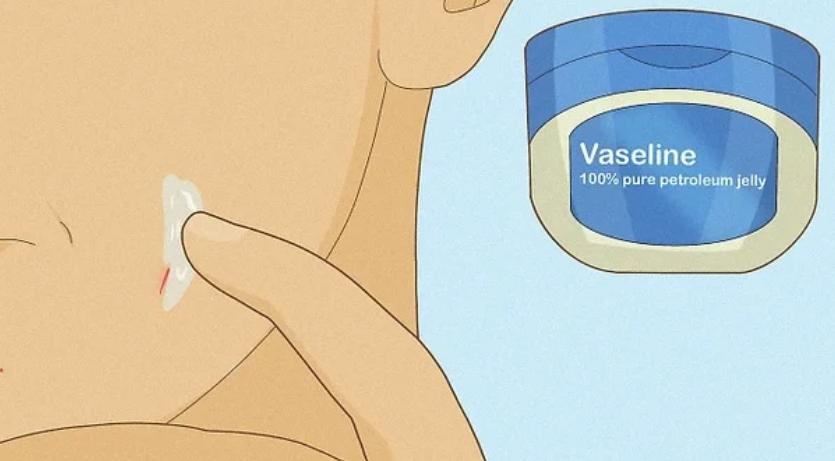Shaving cuts are common and can turn an ordinary grooming routine into a frustrating experience. Whether you’re in a rush or simply not careful enough, these small nicks can bleed profusely. More importantly, knowing how to stop bleeding from shaving quickly is crucial to avoid further irritation and infection. In this blog, we will explore the reasons why shaving cuts bleed so much and provide you with effective and easy-to-follow methods to stop the bleeding. You’ll also learn how to care for shaving cuts afterwards and recognize when it’s necessary to seek medical attention.

Why Do Shaving Cuts Bleed So Much?
Shaving cuts often bleed significantly because the face and other common shaving areas have numerous tiny blood vessels just below the skin's surface. These capillaries are easily damaged, leading to more bleeding than you might expect from a small nick. The skin on the face and neck, in particular, is more delicate and contains a dense network of blood vessels.
Another reason for the heavy bleeding is that modern razor blades are sharp and create clean, deep cuts. Unlike a surface scratch, these cuts penetrate deeply into delicate capillaries. Additionally, shaving in warm environments, such as during or after a hot shower, can cause blood vessels to expand, exacerbating the bleeding. The orientation of the cut also influences the severity of bleeding, as cuts perpendicular to the skin's cleavage lines may remain open longer.
What Are the Best Ways to Stop Bleeding from Shaving?
Applying Aftershave
Applying aftershave can quickly help disinfect the area, soothe irritation, and tighten the skin, which can help stem any bleeding. Look for alcohol-based aftershaves, as they act as astringents, causing the blood vessels to contract. This not only promotes faster healing but also provides a refreshing and clean feeling, leaving your skin feeling smooth and rejuvenated after shaving.
Using a Styptic Pencil
A styptic pencil is a tried-and-true method for stopping minor shaving cuts. The pencil contains aluminum sulfate or potassium alum, which helps constrict blood vessels and promotes clotting. To use, wet the tip of the styptic pencil and gently press it against the cut for a few moments. This quickly seals the wound, reducing bleeding and irritation, ensuring a smoother post-shave experience.
Applying Lip Balm or Petroleum Jelly
Lip balm or petroleum jelly can form a protective barrier over the cut, stemming the flow of blood and shielding the area from further irritation or infection. Simply apply a small amount directly onto the cut, ensuring it covers the entire area. Let it sit and work its magic, helping to soothe and speed up the healing process.
Using a Cold Compress
Applying a cold compress can help constrict blood vessels and significantly reduce bleeding. To do this, wrap some ice in a clean cloth and gently hold it against the cut for a few minutes. Alternatively, you can use an ice cube directly, pressing it onto the wound. This simple technique is effective in minimizing blood flow and promoting quicker clotting.
Applying a Tea Bag or Coffee Grounds
A tea bag soaked in warm water or a pinch of coffee grounds can help stop bleeding quickly. Both tea and coffee contain tannins, which act as natural astringents and can promote clotting. Simply press the warm tea bag or the moistened coffee grounds against the cut for a couple of minutes. The tannins help constrict blood vessels, aiding in faster healing and reducing the bleeding.
How to Care for Shaving Cuts After Bleeding Stops
Keeping the Area Clean and Dry
Once the bleeding has stopped, it’s crucial to keep the affected area clean and dry to avoid infections. Gently clean the area with mild soap and lukewarm water, ensuring not to irritate the skin. Afterward, pat the area dry with a clean towel or gauze. Applying an antiseptic ointment can also help promote healing and prevent infection.
Avoiding Irritants and Friction
Avoid applying any products that contain alcohol or fragrances, as these can further irritate the skin and delay the healing process. Additionally, refrain from rubbing or scratching the area, as this can cause further irritation or reopen the cut. Instead, use a gentle, soothing ointment or moisturizer to promote healing and protect the skin from additional damage.
Moisturizing the Skin
Moisturizing the affected area plays a crucial role in aiding the healing process. Applying a fragrance-free, anti-inflammatory cream or aloe vera gel can help keep the skin hydrated, soothe irritation, and promote faster healing. These products work to reduce inflammation, calm redness, and support the skin’s natural recovery, leaving your skin feeling nourished and refreshed.

When to Seek Medical Attention for Shaving Cuts
Signs of Infection
If you notice increased redness, swelling, pus, or heat around the cut, these are common signs of infection. Additionally, if the pain worsens or the wound doesn’t seem to heal, it could indicate a more serious issue. In such cases, it's important to consult a healthcare provider promptly to prevent further complications and ensure proper treatment.
When to Consult a Doctor
If the cut is particularly deep, doesn’t stop bleeding within 20-30 minutes after applying consistent pressure, or if you experience symptoms like dizziness, lightheadedness, or signs of infection, seek immediate medical attention. A healthcare professional can properly assess the severity of the injury, provide the necessary treatment, and help prevent complications like excessive blood loss or infection.
Conclusion
Stopping bleeding from a shaving cut promptly is essential for avoiding complications like infection and irritation. If you're wondering how to stop bleeding from shaving, simple techniques, such as using a styptic pencil, aftershave, or a cold compress, can make a significant difference. Remember to care for your skin after the bleeding has stopped and to monitor for any signs of infection. By following these methods, you can ensure that your grooming routine remains hassle-free.
FAQs
How long does it take for a shaving cut to heal?
Typically, a minor shaving cut will take about 3-7 days to heal completely. Keeping the area clean, avoiding irritants, and moisturizing can help speed up the process.
Can I prevent shaving cuts from happening?
Yes, you can minimize the risk of cuts by using a sharp razor, shaving in the direction of hair growth, and preparing the skin properly with warm water and shaving cream.
Are there any products that can help prevent shaving cuts?
Using a high-quality razor, shaving cream or gel, and post-shave balms can reduce the likelihood of cuts. Opt for products designed for sensitive skin to further lower the risk of irritation and nicks.
